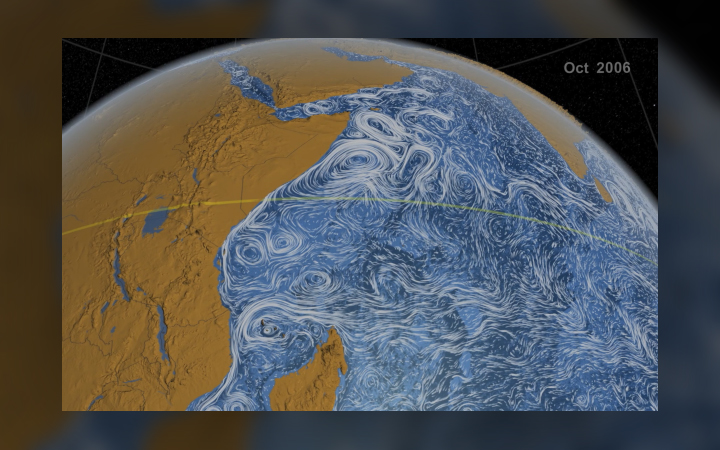Pirates Made Ocean Vortex 'The Great Whirl' Inaccessible. So Scientists Studied It from Space.

An enormous ocean whirlpool the size of Colorado appears every spring off the coast of Somalia, and it's so big, scientists can see it from space.
Satellite data recently revealed it's even bigger and lasts longer than once thought.
Known as the Great Whirl, this churning, clockwise vortex was first described in 1866 by British geographer Alexander Findley, in a book about navigating the Indian Ocean. Findley said that its whirling created "a very heavy confused sea," and recommended that sailors avoid its powerful currents when approaching the African coast. [Earth from Above: 101 Stunning Images from Orbit]
What causes the Great Whirl? While the monsoon winds are thought to play a part, the vortex starts to form in April, about two months before the onset of the monsoon, and it persists for more than a month after the monsoon subsides in September or October, according to a study published in the journal Geophysical Research Letters in 2013.
The whirlpool starts to spin with the arrival of annual Rossby waves in the Indian Ocean. These slow-moving waves, which measure just a couple of inches in height, carry reservoirs of stored energy that fuel the vortex. Once the vortex is awhirl, the monsoon winds arrive and keep it spinning; at its peak, the Great Whirl can expand to over 300 miles (500 kilometers) wide, according to the 2013 study.
Still, researching it in greater depth has proved to be challenging. Because the vortex is so big, it behaves differently than smaller whirlpools. Efforts to study it have also been hampered by pirates who operate near the Somali coast, according to a new study.
Observations from above
Scientists suspected that satellite data could provide insights into the Great Whirl. They analyzed satellite observations spanning 23 years, and examined 22 years of ocean circulation models. From that data, they developed a computer program that could identify the fingerprints of the vortex and track it over time. They also analyzed sea level data, as the center of the whirlpool rises to form a mound that is higher than the ocean surrounding it.
Get the Space.com Newsletter
Breaking space news, the latest updates on rocket launches, skywatching events and more!
In the new study, scientists determined that the whirlpool typically lasts for about 198 days — far longer than previous estimates of 140 days and 166 days. It also ended months later than expected, prevailing through December and even into January in some cases.
And when the Great Whirl was at its most intense, it covered 106,000 square miles (275,000 square kilometers) on average, the study authors reported.
As the Great Whirl is linked to the onset of the monsoon, the new algorithm could also be used to detect patterns that shape monsoon formation. This could help to forecast the amount of rainfall that the seasonal event brings to India, which affects agriculture across the country, lead study author Bryce Melzer, a satellite oceanographer at Stennis Space Center in Mississippi, said in a statement.
"If we're about to connect these two, we might have an advantage in predicting the strength of the monsoon, which has huge socioeconomic impacts," Melzer said.
Their findings were published online April 30 in the journal Geophysical Research Letters.
- Photos: Artistic Views of Earth from Above
- Earth Pictures: Iconic Images of Earth from Space
- 25 Strangest Sights on Google Earth
Originally published on Live Science.
Join our Space Forums to keep talking space on the latest missions, night sky and more! And if you have a news tip, correction or comment, let us know at: community@space.com.











